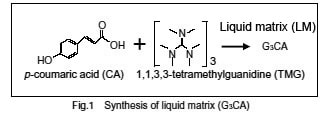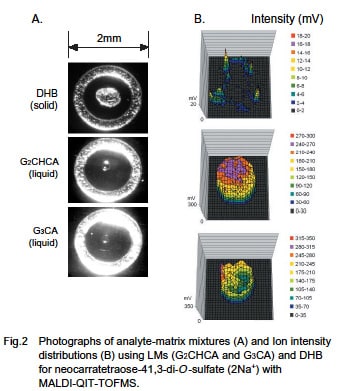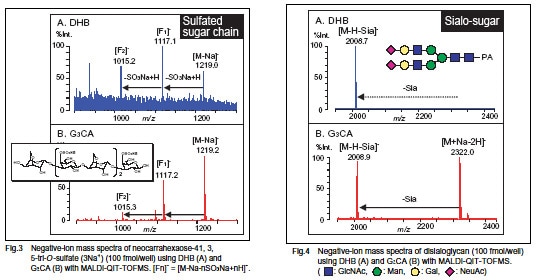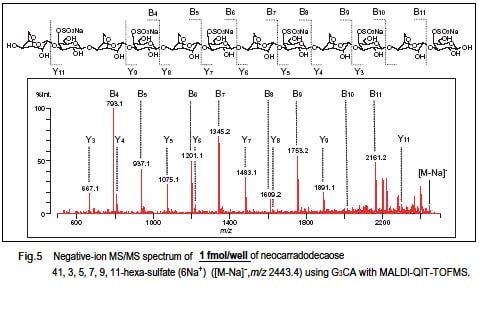Post-Translational Modification Analysis | Sugar Chain Analysis Using a Liquid Matrix
Post-Translational Modification Analysis
Sugar Chain Analysis Using a Liquid Matrix
A new liquid matrix (LM) shown in Fig. 1 was trialed to solve the three major problems with sugar chain analysis using the MALDI method, as follows:
Major Problems with Conventional Sugar Chain Analysis
1: Poor measurement reproducibility due to non-uniformity of the solid matrix/sample crystal mixture
2: Dissociation of sulfate groups and sialo-sugars
3: Poor sensitivity

1. Uniformity of sample/matrix mixture droplet surface
The liquid matrix enhances analysis reproducibility.

2. Inhibiting dissociation of sulfate groups and sialo-sugars
The G3CA liquid matrix inhibits the dissociation of sulfate groups and sialo-sugars during sugar chain analysis.

3. High-sensitivity analysis
The G3CA liquid matrix permits high-sensitivity sugar chain analysis.
The sample/liquid matrix liquid has a certain surface tension and forms a small droplet on the mirror-polished stainless-steel target that allows high-sensitivity analysis.

MALDI-TOF Mass Spectrometry
- Employs unique quadrupole ion trap technology for highly sensitive and accurate MSn spectral measurements of the molecular ions produced by MALDI.
- The high precursor ion selectivity offers reliable selection of the target ions only, even in the presence of large numbers of impurity ions, to permit acquisition of high-quality MSn analysis data.
- Offers highly accurate MSn analysis data that allows accurate structural prediction.
- Analysis software provides powerful support for glycopeptide structural analysis.


